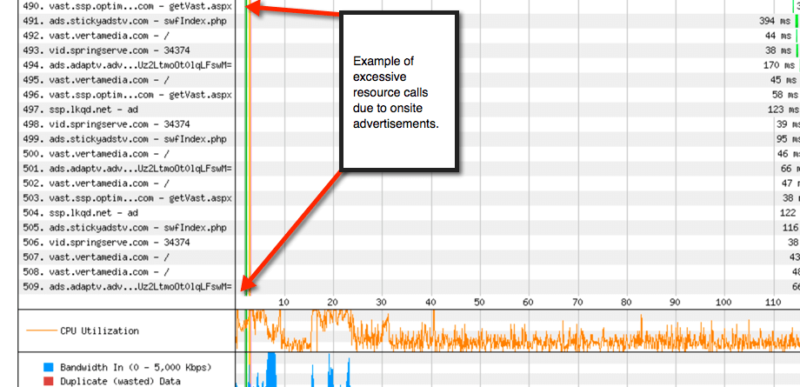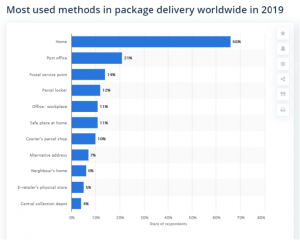We often don’t consider the impact our website’s ads could have on organic search visibility, but columnist Kristine Schachinger explains why too many ads can be a bad thing for users and search engines alike.

Recently, Google announced that it was removing AdSense’s three ad unit limit on a page. This decision seems to have been largely driven by a “mobile first” strategy, as mobile sites don’t have the same limitations as desktop in terms of space and user interaction. Scrolling is not as likely a deterrent on mobile sites. This leaves more space for ads inside the “page.”
So, time to celebrate! Let’s go put more ads in the page and make more money! That seems to be the prevailing thought, but perhaps that mindset is misguided. Not only is this against the spirit of Google’s guidelines, it’s also just not a sustainable strategy long-term. In fact, more ads can often mean less money in the long run.
How can this be, though? Are ads killing your website?
1. Death by the numbers
It would seem logical that the more ads a webmaster puts on the site, the more money the site owners will make. However, this is often not the case — at least, not long term.
While more ads will make more money in short term, they can cause the site to get dragged down in resource calls, uncompressed image downloads, and excessive scripting. All of these add to your site’s page weight — and ultimately, downloading a page laden with ads could be like swimming in a pool of molasses. That’s true even when the ads like Google’s AdSense are loaded in the background.
The devil is in the details
In this example in a test from WebPageTest.org, we can see that this site has 509 resource calls, of which approximately 50% are ad related. This means that as the page downloads, the browser must retrieve over 500 external items. Every call means a trip to and from a server. This can greatly exacerbate page speed issues, no matter how well the load is stacked.

In fact, one client of mine accidentally turned off their ads one day, and the time to download the page went from 24 seconds t0 4. There are additional reasons why this was so dramatic a shift, but the point is that ads can unduly add excessive weight. Try turning yours off for a few minutes and run the page through WebPageTest.org. Notice the difference in your load time?
Now, there is some debate over whether Google only counts the DOM or the full page load when determining page speed boosts/devaluations, and here we can see they did a good job of loading the page content. However, even if Google only counts the DOM, the user still sees the full page load in — and with the way many ads render, this can cause a very poor user experience with pages scrolling, shifting, and refreshing as a user is trying to read the page content. We all know a site we don’t go to anymore because of this issue. Make sure it is not yours.
Of course, your search engine visibility could be impacted, too. Lots of resource calls, slow page loads, excessive scripting, etc., can eventually lead to site devaluations as pages take too long to load and bounce rates increase as users exit out of an overladen ad experience.
Wantonly adding more and more ads is not a strategy; it is like going to Walmart and buying every brand of toilet paper they stock just because you can. Ads should not be plentiful, they should be useful.
2. Spiders are lazy
Every ad becomes a potential obstacle not only for users, but for the spiders trying to crawl your site. Spiders don’t like to be slowed down, and they are especially unhappy when they have to work extra hard to get to your content. Make that spider feel like he is pummeling a rock pile on a hot day, and he is likely to just move on to the next site.
Colloquialisms aside, there is a lot of content out there, and the spiders use a lot of resources. Overload them, and they move on out of necessity.
Why?
Google has what is known as a “crawl budget.” Simply put, crawl budget is the amount of resources Google will use to index your site. There is no specific, set limit to the crawl budget, as every site is unique. However, every resource call is a potential place for the spider to dump out of the crawl of your site because of excessive trips to the server and back causing delays in page render.
Delays in page rendering
Ad network fail to compress images? Are there scripting errors? Are you loading content after your advertising, forcing the crawler to wait for the rest of the DOM? All of these are situations where the crawler is likely to stop indexing your site.
One client of mine started with only 300k pages indexed. We fixed their ad issues, and now Google regularly crawls a couple of million. Ads themselves are not the issue, but they can create issues if not implemented intelligently.
3. Are you top heavy?
No, this isn’t about overdoing your chest flys. Back in 2012, Google announced the “Top Heavy” algorithm, which was designed to prevent sites that were “top heavy” with ads from ranking well in its listings.
The recent change to Google’s AdSense rules suggests that they may now be looking at the pages differently. Instead of a limit of 3 AdSense units per page, Google will now be taking a more general negative view on “pages with more advertising than publisher-provided content.” But what does this mean?
This means that there will be potential devaluations for pages that contain more ads than content. So when you view your page as rendered, what do you see — page content or advertising? Be safe and make sure your page content is the dominant visual.
Note that this algorithm looks at page aggregates, so if you only have a few pages with this issue, don’t worry about it. However, if you use an ad template across the site and you have more ads than content on large sections, you will want to review how to better balance the two.
4. Burn it, burn it with fire
Some ad practices are so negative that users have started to avoid sites that have these ad types. These are ads like the auto-play video with sound, the auto-play video without sound, the disappearing auto-play, and (the worst of the worst) the disappearing auto-play video with sound that turns on even if the user had the sound turned off.
There is only one bit of advice here, and that is this: If you use any of these on your site, remove them. Seriously, you are not likely getting the return you think you are. It is more likely users are just trying to turn it off and clicking through by accident. However, you are likely angering them.
Just don’t, ever use any of these. The only one that is tolerable is the video without sound, but it is still annoying, so really just don’t.
5. Burning man
In paying homage to the big man set on fire in the desert this time of year, this is the most important aspect of how ads are destroying your site. Burn rates.
What are burn rates?
Burn rates are how fast you turn off your audience due to bad site practices, especially in advertising. By creating slow page loads, ad heavy design, blocking content, and auto-playing videos, users are getting turned off at a faster and faster rate.
This has led to the growth of ad blocking. According to a recent report by PageFair and Adobe, “[t]he estimated loss of global revenue due to blocked advertising during 2015 was $21.8B.”
Some additional stats from that report include:
- As of Q2 2015, there were 198 million active ad block extension users around the world.
- Ad blocking grew by 41% globally from Q2 2014 to Q2 2015.
- US ad blocking grew by 48% from Q2 2014 to Q2 2015, to reach 45 million monthly active users.
- UK ad blocking grew by 82% from Q2 2014 to Q2 2015, to reach 12 million monthly active users.
And when we get to 2016, it gets even worse.
At least 419 million of the 1.9 billion smartphone users in the world use ad blockers, according to PageFair. Ad blockers are more popular in emerging markets where internet access is more expensive and much slower. As many as 36% of smartphone users in the Asia Pacific region use ad blockers on the mobile web, compared to 22% of smartphone users globally, the report said.
Bad ad practices are causing users to not only leave sites, but to download software that makes sure they never see those site’s ads again. Are you facing an ad blocker issue? Do you even know?
Stop the madness
If advertisers and publishers don’t fix their ways, there will be dire consequences to pay.
If the industry doesn’t change its ways, rest assured, the cost of advertising will climb inexorably, for brands and all that support them. Scalable ads will have to be replaced by more handcrafted native ads. Extortion payments to blockers will become routine, as retail slotting fees have become routine in the consumer goods industry. Ad-block profiteers and publishers will engage in an endless technology arms race. The internet may survive as a mass communication tool, but it’ll look much different, even perhaps post-apocalyptic.
The good news? It doesn’t have to be this way.
According to a research report by the Internet Advertising Bureau (IAB):
[T]wo-thirds of U.S. consumers who run ad blockers could be convinced to uninstall them should the industry take some steps to change habits deemed annoying by most online users.
The IAB’s research report notes that there are some pretty simple ways to get users to turn their ad blockers off. They are to:
- Ensure that ads do not have auto-play audio or video in environments where they aren’t anticipated by the consumer.
- Make certain that ads do not block content.
- Safeguard users from malware.
- Guarantee that ads do not slow down browsing.
Not only do these make the experience better for users, but also for Google. As we know, a good user experience is a good Google experience.
So don’t be penny wise and pound foolish. Making sure you are working with a proper and positive ad strategy will help prevent your site from suffering from devaluations in Google and invisibility issues with users. Remember, once a user is burned, it is nearly impossible to get them back.
Is it worth it for an extra ad space on the page?
[Article on Search Engine Land.]
Some opinions expressed in this article may be those of a guest author and not necessarily Marketing Land. Staff authors are listed here.
Marketing Land – Internet Marketing News, Strategies & Tips
(75)
Report Post









